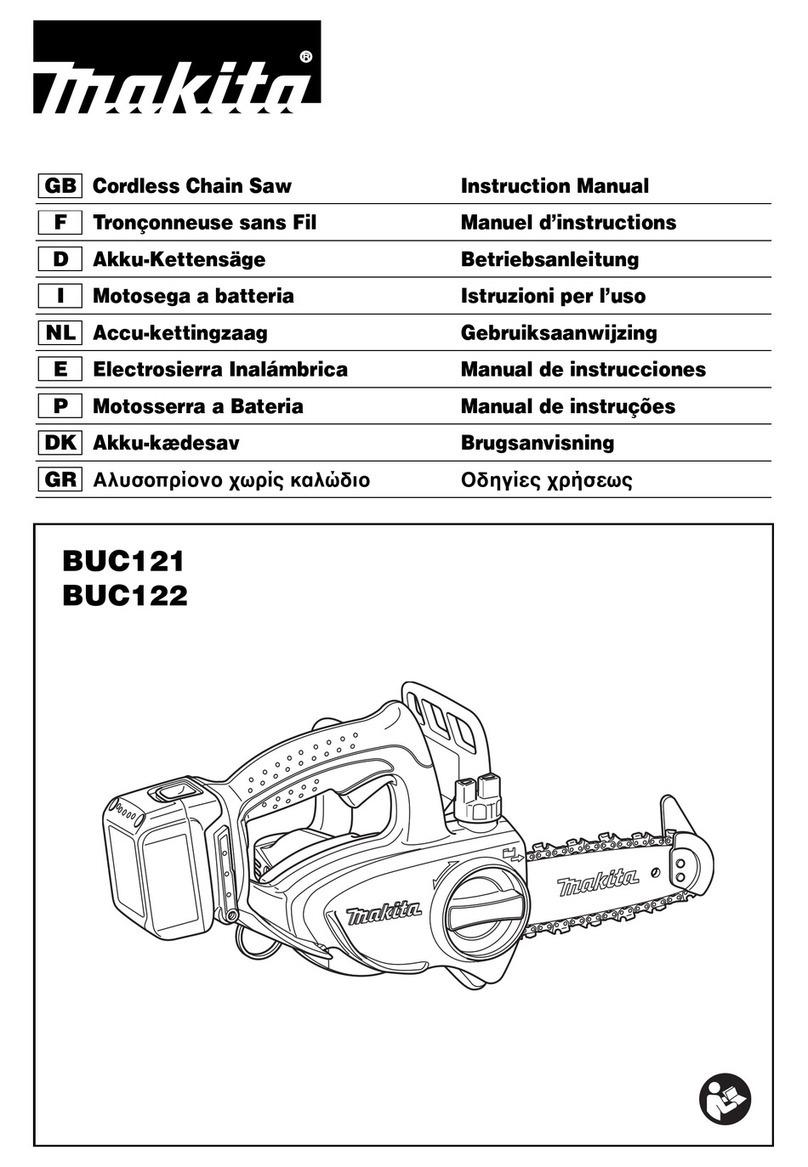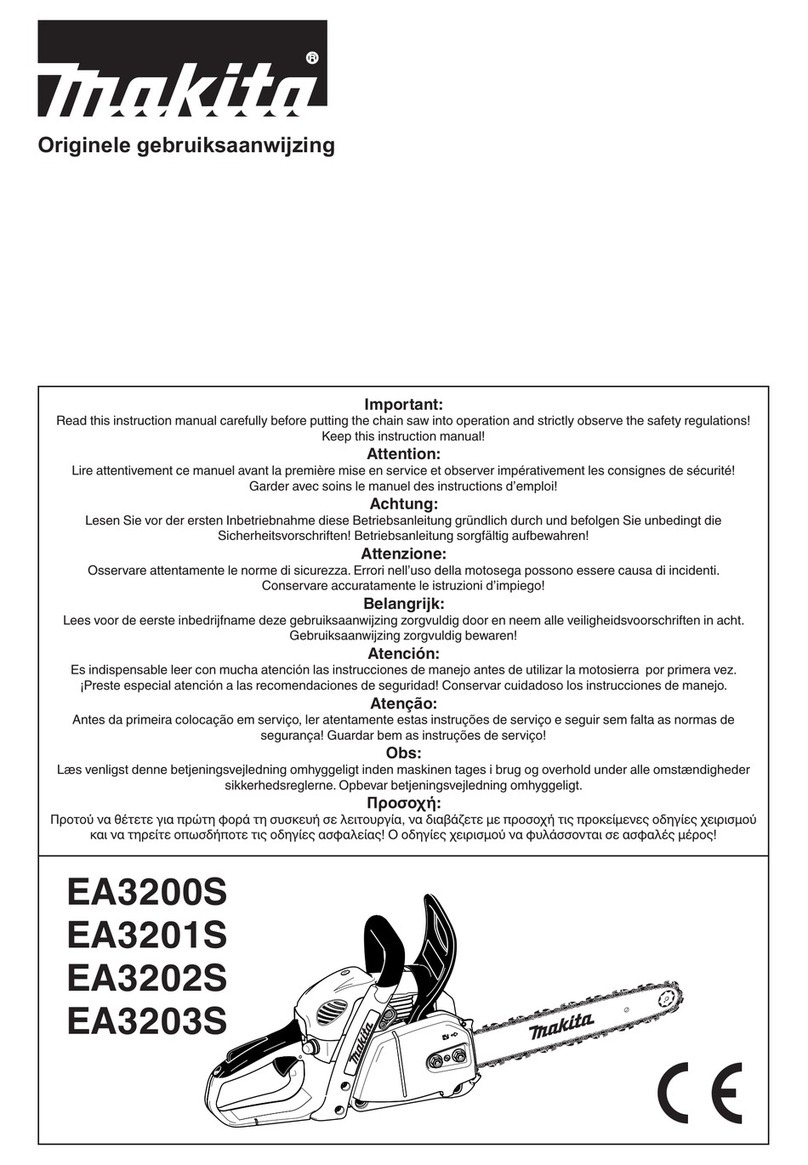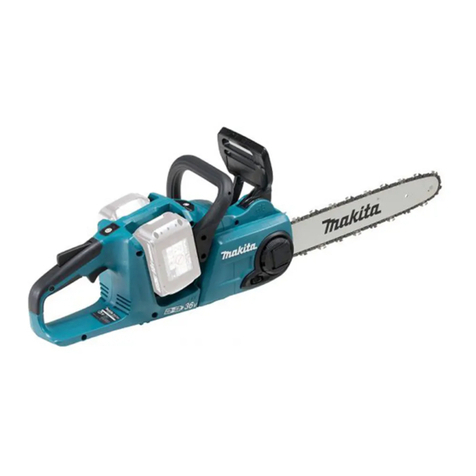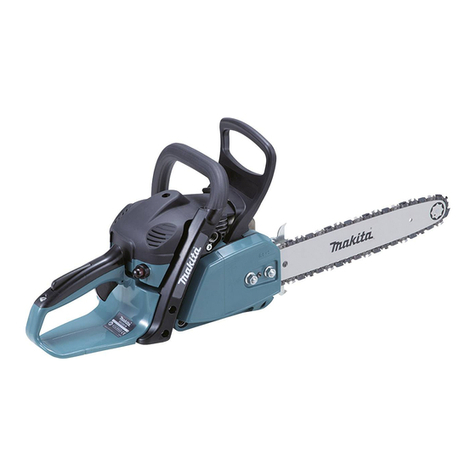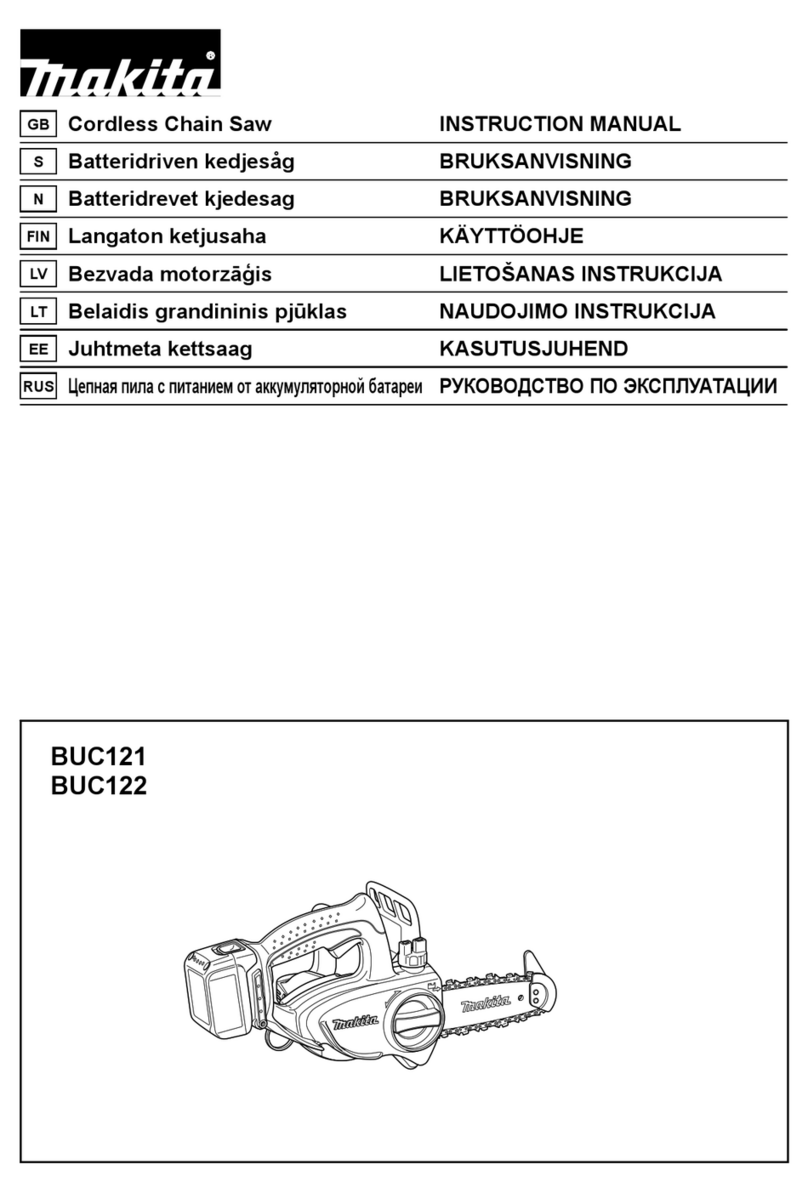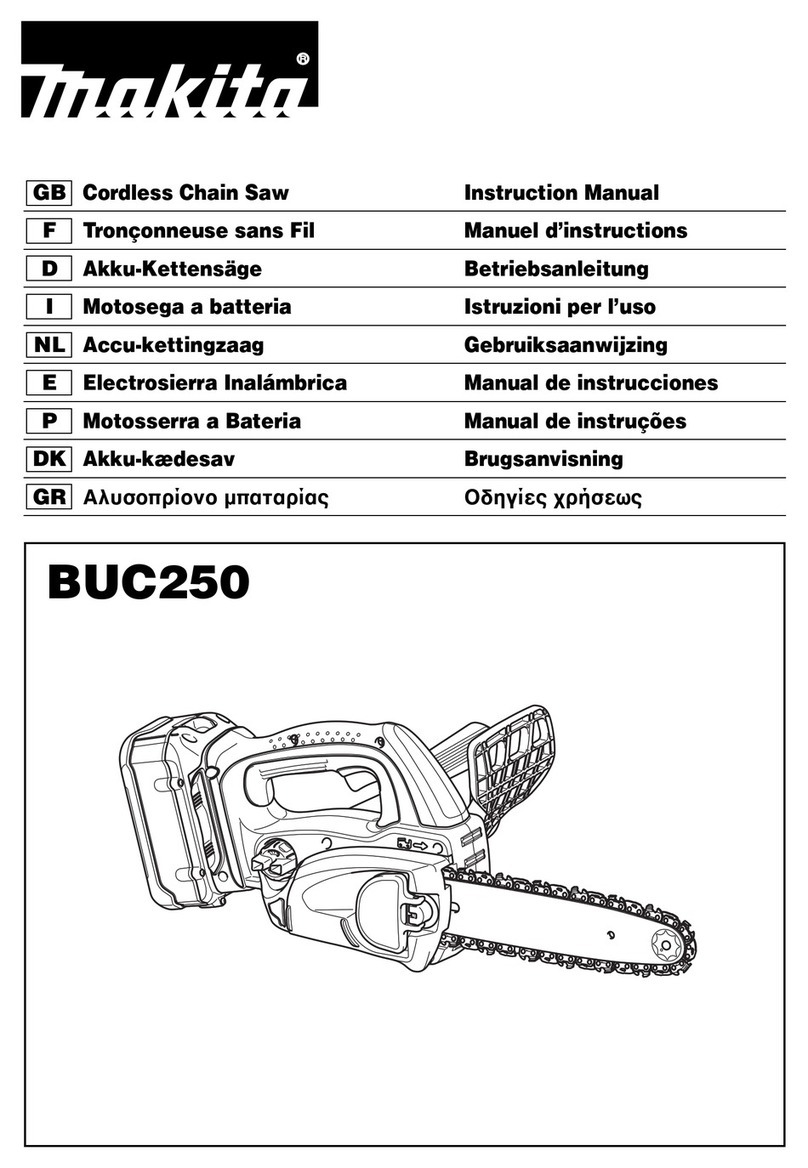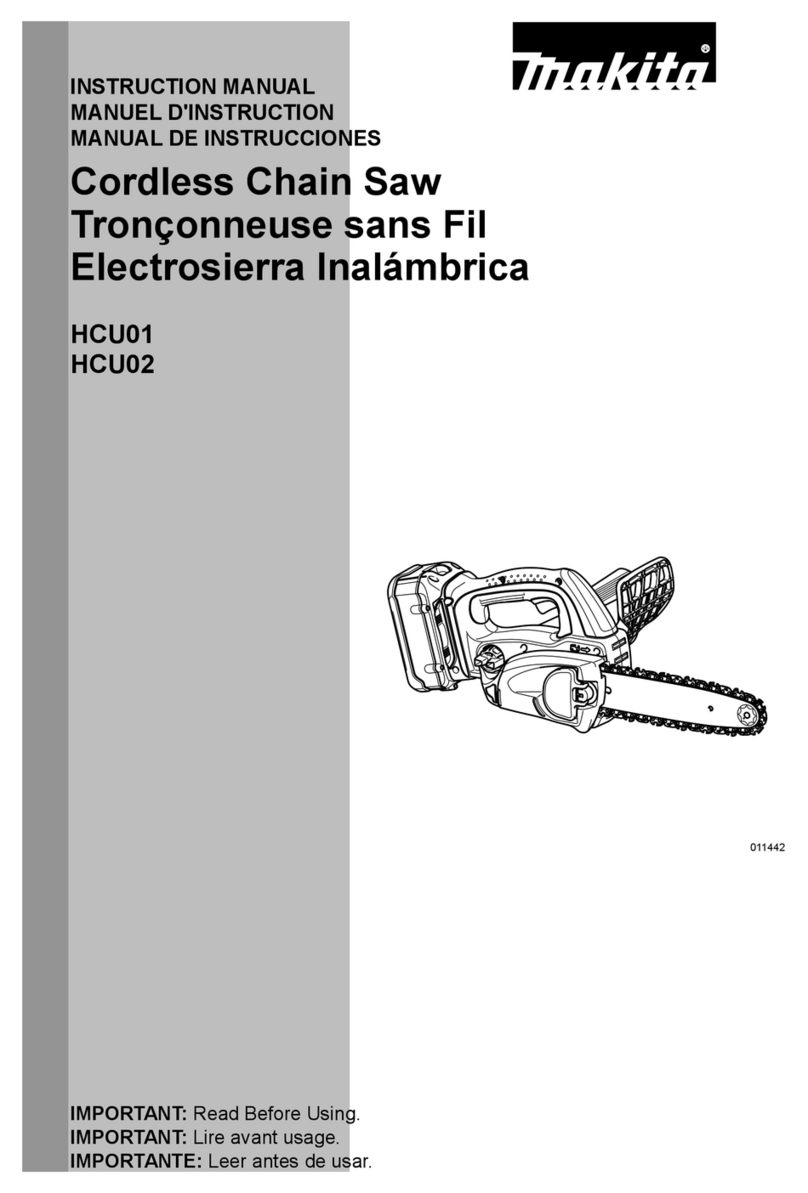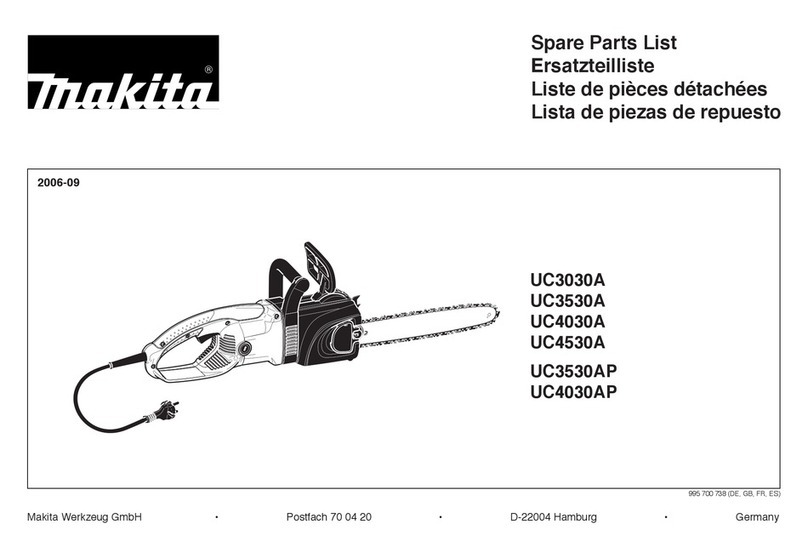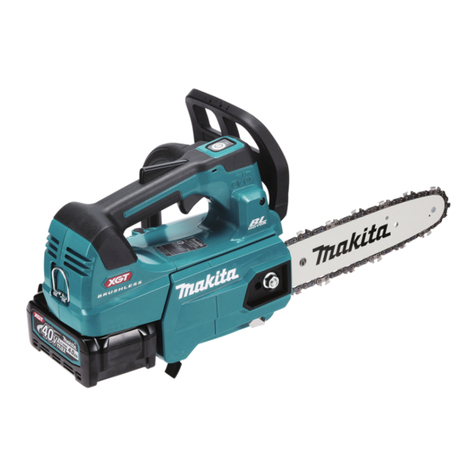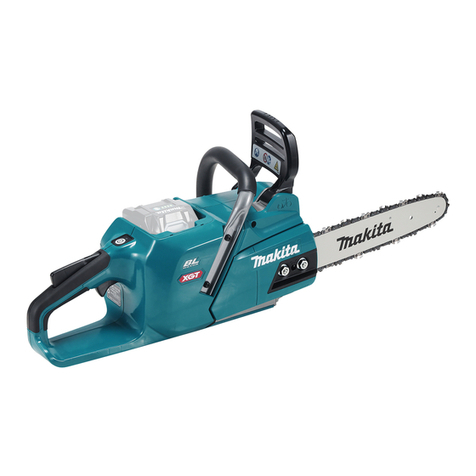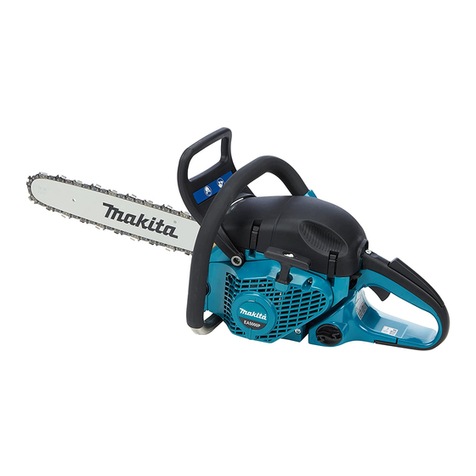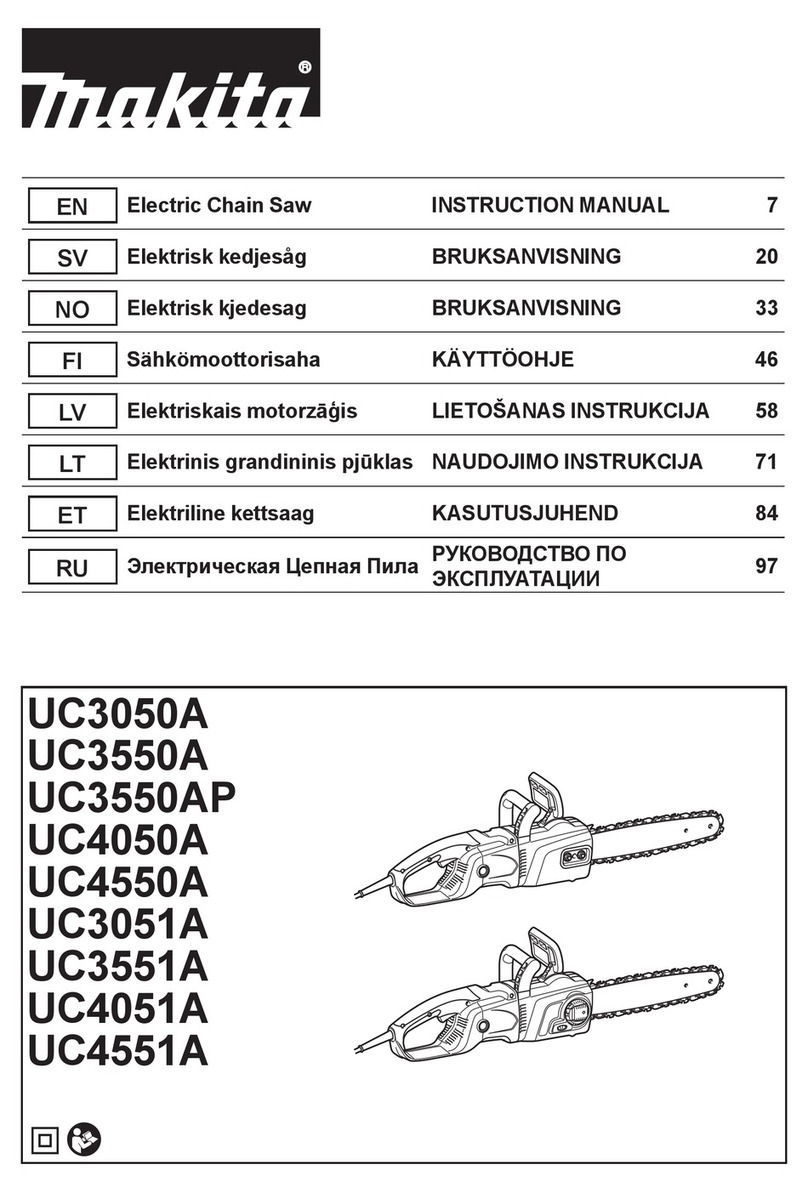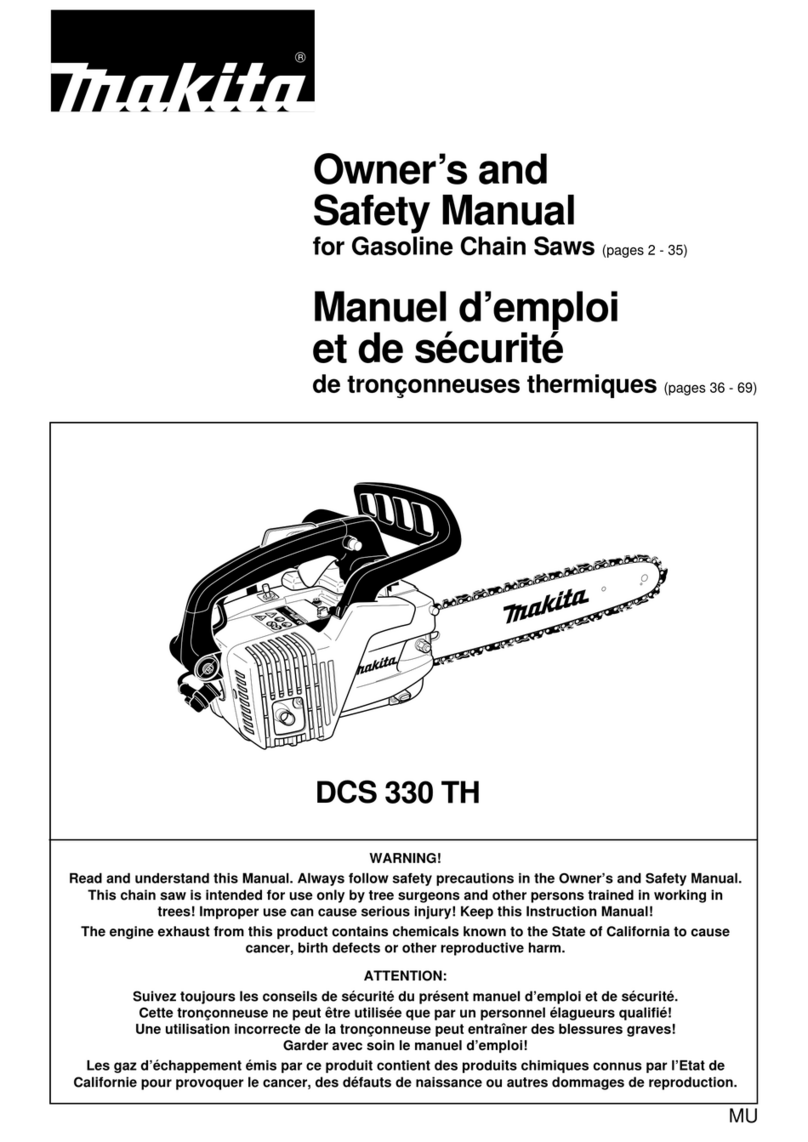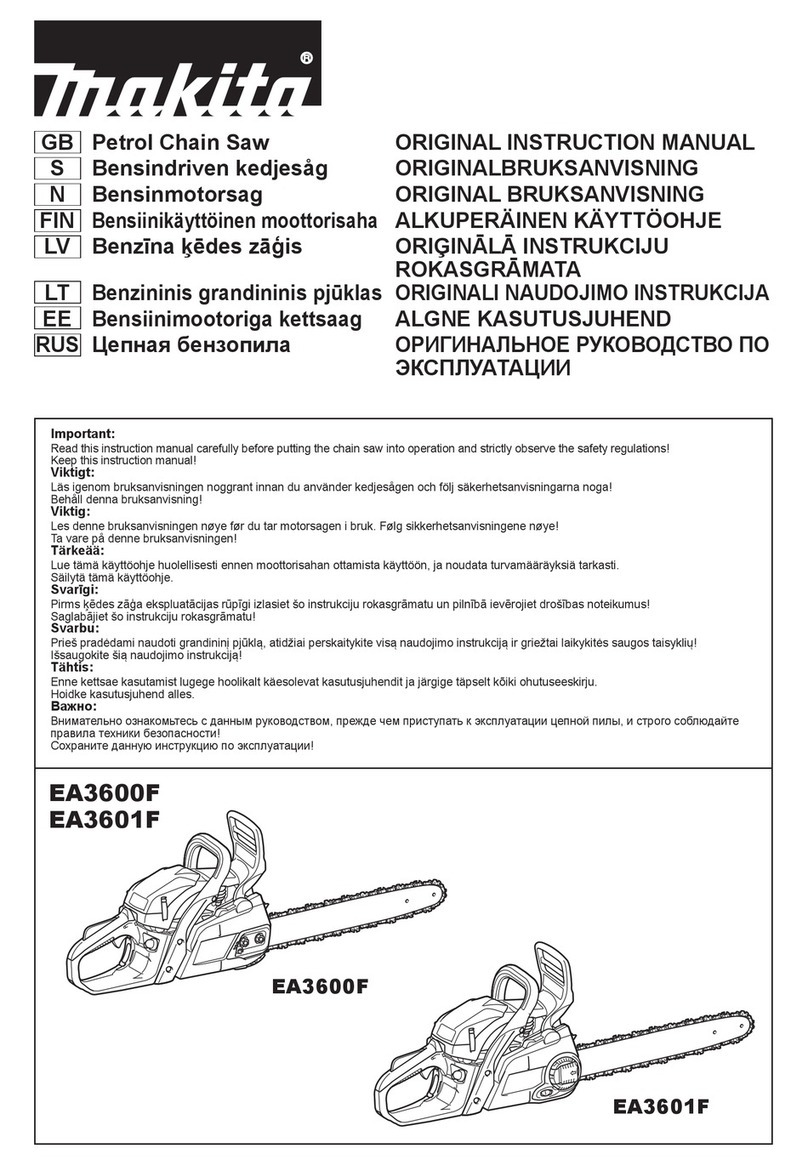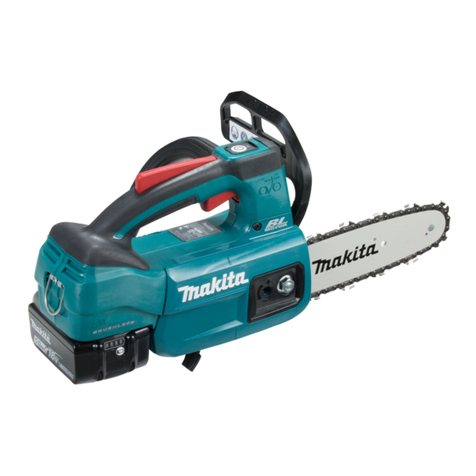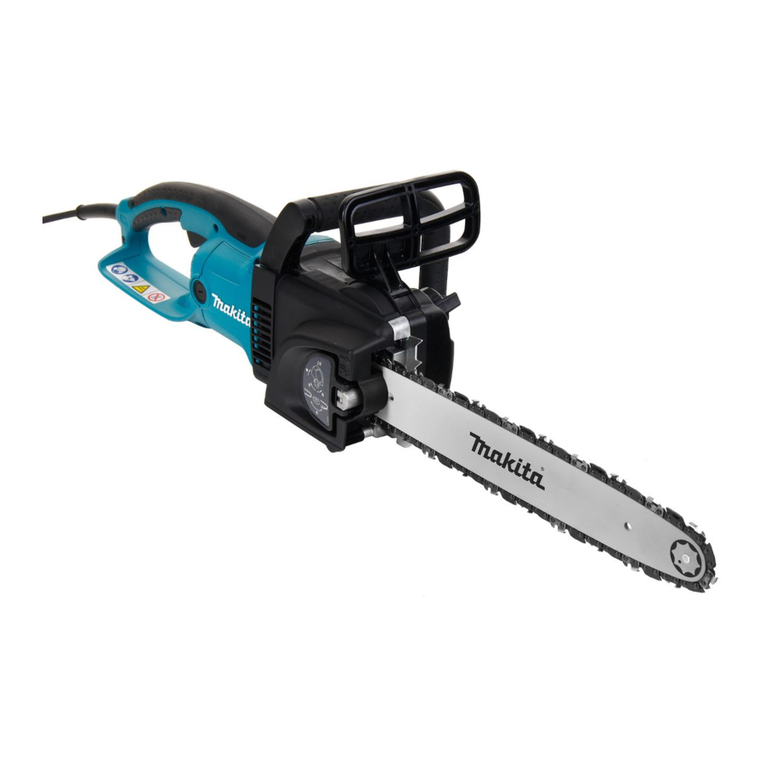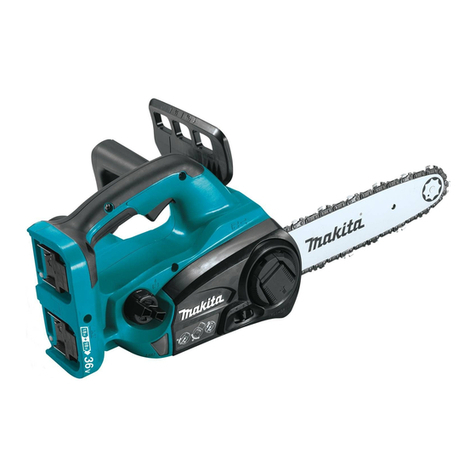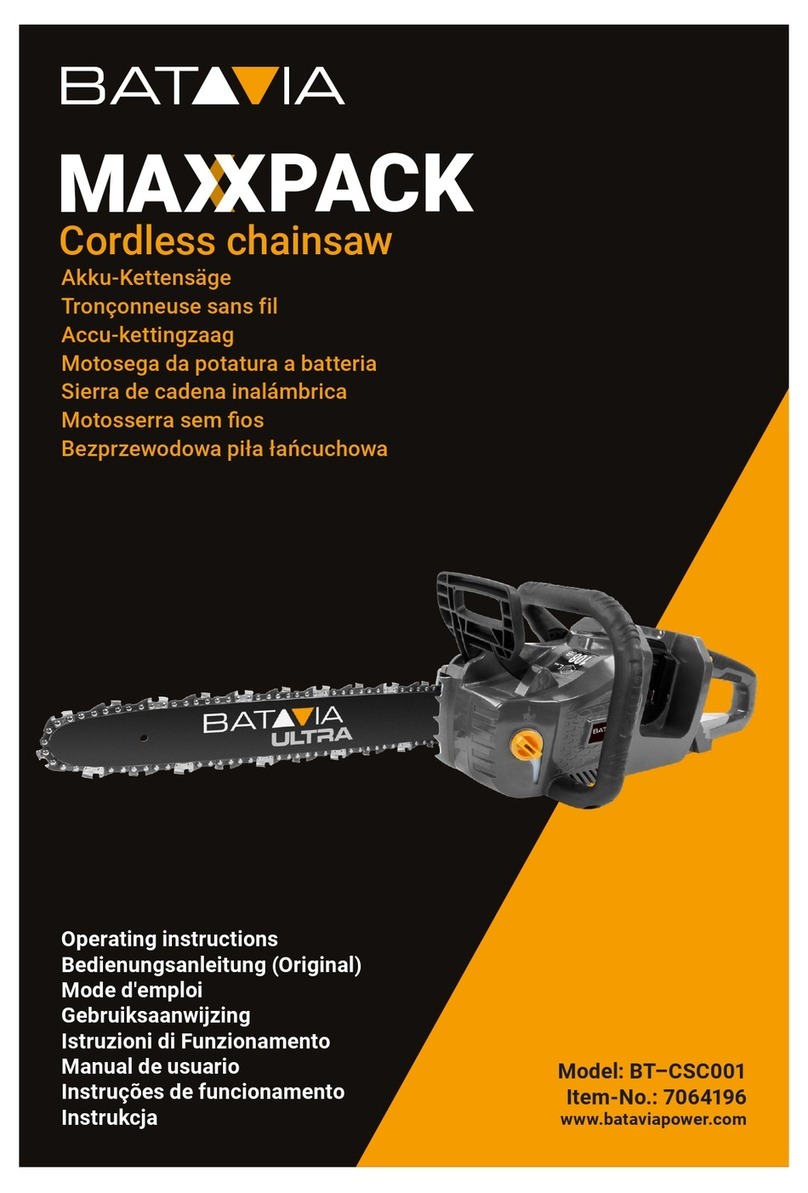
10
–Do not overreach and do not cut above
shoulder height. This helps prevent unintended tip
contact and enables better control of the chain saw
in unexpected situations.
–Only use replacement bars and chains
specified by the manufacturer. Incorrect
replacement bars and chains may cause chain
breakage and/or kickback.
–Follow the manufacturer’s sharpening and
maintenance instructions for the saw chain.
Decreasing the depth gauge height can lead to
increased kickback.
ADDITIONAL SAFETY RULES
1. Read the instruction manual in order to familiarize
yourself with operation of the chain saw.
2. Before using the chain saw for the first time, arrange
to have instruction in its operation. If this is not
possible, at least practice cutting round timber on a
trestle before beginning work.
3. The chain saw must not be used by children or young
persons under 18 years of age. Young persons over
16 years of age may be exempted from this restriction
if they are undergoing training under the supervision
of an expert.
4. Working with the chain saw requires a high level of
concentration. Do not work with the saw if you are not
feeling fit and well. Carry out all work calmly and
carefully.
5. Never work under the influence of alcohol, drugs or
medication.
Proper use
1. The chain saw is intended solely for cutting wood. Do
not use it for example to cut plastic or porous
concrete.
2. Only use the chain saw for operations described in
this instruction manual. Do not, for example, use it to
trim hedges or for similar purposes.
3. The chain saw must not be used for forestry work, i.e.
for felling and limbing standing timber. The chain saw
cable does not provide the operator with the mobility
and safety required for such work.
4. The chain saw is not intended for commercial use.
5. Do not overload the chain saw.
Personal protective equipment
1. Clothing must be close-fitting, but must not obstruct
mobility.
2. Wear the following protective clothing during work:
• A tested safety helmet, if a hazard is presented by
falling branches or similar;
• A face mask or goggles;
• Suitable ear protection (ear muffs, custom or
mouldable ear plugs). Octave brand analysis upon
request.
• Firm leather safety gloves;
• Long trousers manufactured from strong fabric;
• Protective dungarees of cut-resistant fabric;
• Safety shoes or boots with non-slip soles, steel
toes, and cut-resistant fabric lining;
• A breathing mask, when carrying out work which
produces dust (e.g. sawing dry wood).
Protection against electric shock
The chain saw must not be used in wet weather or
damp environments, as the electric motor is not
waterproof.
1. Only plug the saw into sockets in tested electrical
circuits. Check that the system voltage matches that
on the rating plate. Ensure that a 16 A line fuse is
fitted. Saws used in the open air must be connected to
a residual current-operated circuit-breaker with an
operating current no higher than 30 mA.
Should the connecting cable be damaged,
withdraw the mains plug immediately.
Safe working practices
1. Before starting work, check that the chain saw is in
proper working order and that its condition complies
with the safety regulations. Check in particular that:
• The chain brake is working properly;
• The run-down brake is working properly;
• The bar and the sprocket cover are fitted correctly;
• The chain has been sharpened and tensioned in
accordance with the regulations;
• The mains cable and mains plug are undamaged;
Refer to the “CHECKS” section.
2. Always ensure in particular that the extension cable
used is of adequate cross-section (see
“SPECIFICATIONS”). When using a cable reel, wind
the cable completely off the reel. When using the saw
in the open air, ensure that the cable employed is
intended for open-air use and is rated accordingly.
3. Keep the cord away from the cutting area and to
position cord so that it will not be caught on branches,
and the like, during cutting.
4. Do not operate the chain saw in the vicinity of
flammable dust or gases, as the motor generates
sparks and presents a risk of explosion.
5. Work only on firm ground and with a good footing. Pay
particular attention to obstacles (e.g. the cable) in the
working area. Take particular care where moisture,
ice, snow, freshly cut wood or bark may make
surfaces slippery. Do not stand on ladders or trees
when using the saw.
6. Take particular care when working on sloping ground;
rolling trunks and branches pose a potential hazard.
7. Never cut above shoulder height.
8. Hold the chain saw with both hands when
switching it on and using it. Hold the rear handle
with your right hand and the front handle with your left.
Hold the handles firmly with your thumbs. The bar and
the chain must not be in contact with any objects when
the saw is switched on. (Fig. 1)
9. Clean the area to be cut of foreign objects such as
sand, stones, nails, wire, etc. Foreign objects damage
the bar and chain, and can lead to dangerous
kickback.
10. Take particular care when cutting in the vicinity of wire
fences. Do nut cut into the fence, as the saw may kick
back.
11. Do not cut into the ground.
12. Cut pieces of wood singly, not in bunches or stacks.
13. Avoid using the saw to cut thin branches and roots, as
these can become entangled in the chain saw. Loss of
balance presents a hazard.
